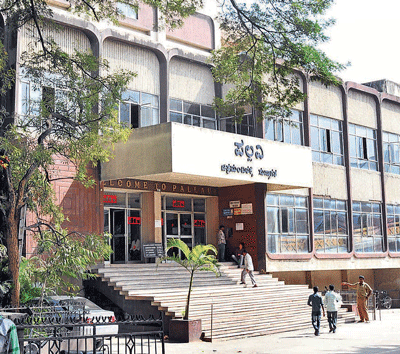
Single-screen theatres may soon be a nostalgic relic across the State as the government is all set to bring a structural change to the rules and guidelines on construction of cinema halls in order to promote multiplexes.
A committee, headed by Mysore Regional Commissioner, M V Jayanthi, recommended to the government last May that single screens be turned into multiplexes. The recommendations followed year-long consultation with most deputy commissioners.
Many single-screen theatres in the City that regaled cinemagoers for decades are being demolished for being unviable or making way for malls and multiplexes.
After the loss of Pallavi Theatre to a super speciality hospital in 2012, many other single-screen theatres — Sampige, Savitha on Platform Road, Sagar on K G Road, Uma in Chamarajpet — are going the same path.
Vijay Kumar, Chairman of Film Chamber of Commerce, added another dimension to the issue. If single screens are razed in Bangalore, it makes news, but numerous theatres in small cities and towns are being replaced by shopping complexes every day, he said.
There were 1,300 theatres in the State until a few years ago. Now the number stands at a mere 600. Of this lot, Kumar said, just 200 are available for Kannada films.
‘Financially unviable’
Other avenues for entertainment, besides piracy, prevent the audience from going to theatres, making them financially unviable. K V Chandrashekar, owner of Veeresh Cinemas, said that most single-screen theatres were decades old and the guidelines on constructing cinema halls were outdated.
“On an average, most theatres have 800 seats. My theatre had 950 seats. But today you can’t get such a big house full for any blockbuster. The industry dynamics have changed and multiplexes rule the roost,” Chandrashekar said. “Now, the average seating capacity of a theatre is just 250-300. Single screens with 800 seats charge huge rent. But small films can neither afford them nor attract the masses. Hence, the theatres are fast becoming unviable.”
The solution: Reinvent. Chandrashekar thinks it is the only way to sustain and survive. He has renovated his theatre, dividing it into two screens. “It’s better to adapt to the times,” he said.
A member of the committee headed by Jayanthi, Chandrashekar said the recommendation is to amend and simplify construction of theatres.
At present, if a theatre is to be renovated, the owner should submit a building modification plan. It’s a herculean task to get it approved, Chandrashekar said, adding that as per existing guidelines, separate staircase and exit are needed for every screen if a multiplex is constructed.
Besides, exit doors must be located on the sideways and not below the screen. “It escalates the cost,” he explained. “With the multiplex design, these rules are followed only in violation.”
The panel’s recommendations have been sent to the law department for legal opinion. A source said the department had accepted the guidelines and the government is expected to amend the Cinematography Act, 1954, by an executive order soon.
Kumar has requested the chief minister to provide a subsidy of Rs 25 lakh to single-screen theatres willing to switch to multiplexes. The chief minister responded favourably to the proposal, he said.